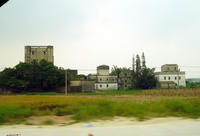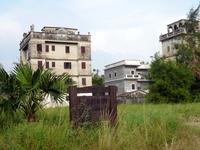You are in: Asia -> China -> Kaiping Diaolou and ... , and traditional search or Image Gallery will yield results of this site only
Kaiping Diaolou and Villages
| Site number: | 1112 |
|
| Type of site: | Cultural | |
| Date: | Late19th-20th c | |
| Date of Inscription: | 2007 | |
| Location: | Asia, China, Guangdong Province, Kaiping | |
Up to 75 images are shown here. Click on each for more details or on Image Gallery for more images.
| Description: | Featuring the Diaolou and multi-storeyed defensive village houses in Kaiping, the site displays a complex and flamboyant synthesis of Chinese and Western structural and ornamental forms. During the late 19th and early 20th centuries several countries in South Asia, Australasia and North America felt the impact of émigré Kaiping people within the countries’ developments-their significant role is reflected in the site. Out of four groups of Diaolou, twenty of the most symbolic ones are inscribed on the List. These buildings come in three different forms: communal towers built by a number of families and utilized as temporary refuge; residential towers built by individual affluent families and employed as fortified residences; and watch towers. These buildings (built of stone, pise, brick or concrete) reveal the intricate and confident fusion of Chinese and Western architectural styles. In response to local banditry the Ming period saw the beginning of certain customs within construction, the Diaolou testify to the final flowering of these local building traditions; they incessantly retain a harmonious relationship with their surrounding landscape. --WHMNet paraphrase from the description at WHC Site, where additional information is available. For 360 degree imaging of this site, click here. | |
| The diaolou (碉樓) are fortified multi-storey towers, generally made of reinforced concrete. These towers are located mainly in Kaiping County, Guangdong province, China. Kaiping together with its neighbouring counties of Enping, Taishan and Xinhui are collectively known as the "Four counties". It was from the four counties that many of the Chinese labourers to North America originated from. Also known as the "Kaiping diaolou", the first towers were built during the early Qing Dynasty, reaching a peak in the 1920s and 1930s, when there were more than three thousand of these structures. Today, approximately 1,833 diaolou remain standing in Kaiping, and approximately 500 in Taishan. Although the diaolou served mainly as protection against forays by bandits, a few of them also served as living quarters. Kaiping has traditionally been a region of major emigration abroad, and a melting pot of ideas and trends brought back by overseas Chinese. As a result, many diaolou incorporate architectural features from China and from the West. In 2007, UNESCO named the Kaiping Diaolou and Villages in China as a World Heritage Site. UNESCO wrote, "...the Diaolou ... display a complex and flamboyant fusion of Chinese and Western structural and decorative forms. They reflect the significant role of émigré Kaiping people in the development of several countries in South Asia, Australasia, and North America, during the late 19th and early 20th centuries, and the close links between overseas Kaiping and their ancestral homes. The property inscribed here consists of four groups of Diaolou, totaling some 1,800 tower houses in their village settings. --Wikipedia. Text is available under the Creative Commons Attribution-ShareAlike License. For 360 degree imaging of this site, click here. | ||
| Source: | http://whc.unesco.org/en/list/1112 | |
| Reference: | 1. UNESCO World Heritage Center, Site Page. | |












































































